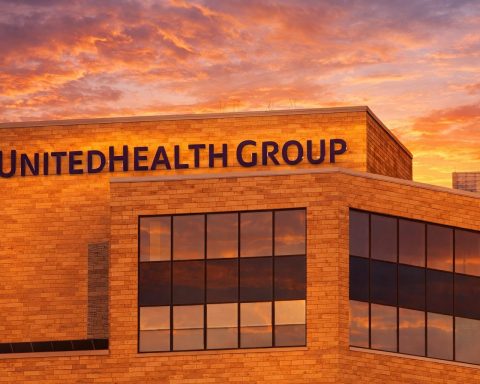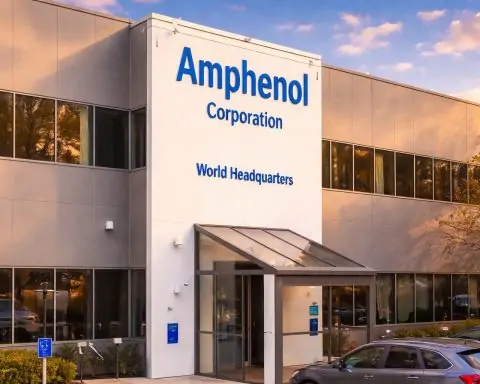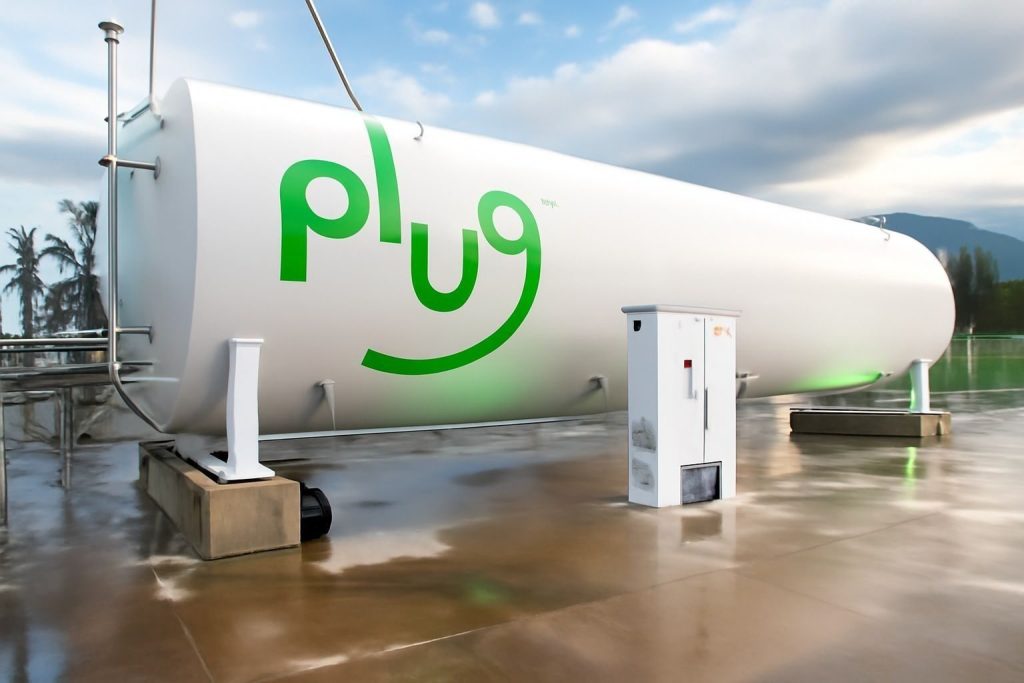On Friday, November 28, 2025, Eli Lilly and Company (NYSE: LLY) shares traded lower, giving back a slice of recent gains after the drugmaker became the first pharmaceutical company ever to hit a $1 trillion market valuation on November 21. [1]
As of late morning in New York, Lilly stock was changing hands at around $1,075–$1,080 per share, down roughly 2.5% on the day. That still leaves the stock more than 70% above its 52‑week low of $623.78 and only about 3% below its record high of $1,111.99. [2]
Quick snapshot: Eli Lilly stock today (LLY)
Based on live data from multiple market trackers, here’s where Eli Lilly stands on November 28, 2025: [3]
- Share price: ~$1,077 (intraday)
- Day move: Down about 2–3% in a light, post–Thanksgiving session
- 52‑week range:$623.78 – $1,111.99
- Market value: Roughly $0.96–$1.02 trillion, depending on data source and intraday price
- Trailing P/E ratio: Around 53–54× earnings, well above the healthcare sector average of ~25× [4]
- Dividend yield: About 0.5–0.6% on an annual dividend of $6.00 per share [5]
- YTD performance: Up roughly 33% in 2025, after a huge multiyear run powered by obesity and diabetes drugs [6]
In other words, today’s pullback looks more like a breather after a historic rally than a major change in the underlying story.
Why Eli Lilly stock is still front‑page news
Lilly’s stock performance is being driven by three overlapping forces:
- Explosive GLP‑1 obesity and diabetes sales
- A rapidly expanding pipeline and deal-making spree
- A once‑in‑a‑generation rerating of big‑pharma valuations
Obesity and diabetes drugs are the growth engine
The core of the story is Lilly’s incretin franchise – especially Mounjaro (type 2 diabetes) and Zepbound (obesity), both based on tirzepatide.
In Q3 2025, Eli Lilly reported: [7]
- Revenue:$17.6 billion, up 54% year‑over‑year
- Reported EPS:$6.21 vs. $1.07 a year earlier
- Non‑GAAP EPS:$7.02
- Key products revenue: Nearly $12 billion, led by Mounjaro and Zepbound
- Full‑year 2025 guidance raised to $63.0–$63.5 billion in revenue and $23.00–$23.70 in non‑GAAP EPS
External analysis shows that Mounjaro and Zepbound together generated over $10 billion in quarterly sales, accounting for more than half of the company’s revenue in the latest quarter and cementing Lilly’s leadership in the GLP‑1 class. [8]
That demand is what pushed Lilly into the $1 trillion club on November 21, making it the first drugmaker – and only the second non‑tech U.S. company after Berkshire Hathaway – to reach that milestone. [9]
The new access deal with Washington: Volume vs. pricing
A major development shaping sentiment around LLY this month is Lilly’s agreement with the U.S. government to expand access to its obesity medicines.
On November 6, 2025, Lilly announced a deal with the U.S. government that: [10]
- Builds on earlier insulin pricing caps,
- Aims to expand access to obesity drugs to nearly 40 million Americans on government insurance programs,
- Introduces lower out‑of‑pocket costs for key products.
Key elements starting as early as April 1, 2026 (pending regulatory approvals) include: [11]
- Medicare beneficiaries would pay no more than $50 per month for Zepbound and the oral obesity pill orforglipron (if approved).
- States could extend access through Medicaid.
- Direct‑to‑consumer prices would be cut, with Zepbound’s lowest dose starting at $299 and orforglipron starting at $149 per month.
Analysts view the deal as a double‑edged sword:
- Bullish side: It dramatically expands the addressable market, especially among older and lower‑income patients whose coverage has been restricted until now.
- Bearish side: It pressures net pricing and margins at precisely the moment Lilly is scaling production and investing tens of billions in new U.S. manufacturing capacity. [12]
Reuters notes that some analysts estimate the GLP‑1 obesity market could be worth $150 billion annually by 2030, with Lilly and rival Novo Nordisk expected to control most of that market – but only if pricing and access issues are managed carefully. [13]
From injectables to pills: Next‑gen obesity pipeline
Today’s valuation also reflects what’s coming, not just what Lilly already sells.
Orforglipron: Oral GLP‑1 pill
Lilly is advancing orforglipron, its once‑daily oral GLP‑1 receptor agonist, which could:
- Offer a pill alternative to injectable GLP‑1s,
- Be easier and cheaper to manufacture at scale,
- Potentially reach patients reluctant to use injections. [14]
Phase 3 data have been strong enough for Lilly to prepare global regulatory submissions for obesity by year‑end 2025, with the company also seeking a U.S. “National Priority Voucher” that could speed FDA review. [15]
Eloralintide and the amylin class
Lilly is also pushing eloralintide, a once‑weekly injectable that mimics the hormone amylin rather than GLP‑1. In a mid‑stage trial, patients lost between around 9.5% and 20% of body weight at various doses over 48 weeks, prompting Lilly to move the drug into late‑stage trials. [16]
Analysts have called the data “best‑in‑class” for the amylin category, suggesting that Lilly could retain leadership even as other drugmakers pursue alternative hormonal targets. [17]
Retatrutide and multi‑agonists
Beyond tirzepatide and amylin, Lilly is running major Phase 3 programs for retatrutide, a drug that targets three metabolic pathways at once. Early studies showed weight loss exceeding 20% of body weight, which has fueled excitement about a new generation of more potent therapies – alongside questions about safety, muscle preservation and long‑term tolerability. [18]
A wider pipeline: Alzheimer’s, oncology, gene editing and more
Part of what makes Eli Lilly a market‑darling is that the company isn’t only about GLP‑1 drugs.
Over the last two years, Lilly has executed a broad “multiple growth pillars” strategy that includes: [19]
- Neurodegeneration: Full FDA approval (2024) of Kisunla (donanemab) for early Alzheimer’s disease and an updated label in 2025 based on additional trial data.
- Inflammatory bowel disease:
- Acquisition of Morphic (oral integrin inhibitors) to complement Lilly’s IL‑23 drug Omvoh,
- Omvoh’s label expansion to cover both ulcerative colitis and Crohn’s disease.
- Radiopharmaceuticals:
- Acquisition of POINT Biopharma (PSMA‑targeted radioligands for prostate cancer),
- Deals with Aktis Oncology and Radionetics to build a broader radiopharma pipeline.
- Cardiovascular gene editing:
- Acquisition of Verve Therapeutics to develop one‑time CRISPR‑based treatments for high cholesterol (PCSK9).
- Manufacturing:
- Billions of dollars committed to new facilities – including a major new plant in Virginia plus expanded sites in Texas and Puerto Rico – to support GLP‑1 demand and future biologics.
This breadth helps support the argument that Lilly is evolving into a multi‑franchise pharma platform, not a single‑product story – though obesity and diabetes remain the dominant valuation driver.
Regulatory and safety overhangs
No GLP‑1 story is complete without acknowledging risks and scrutiny.
In September 2025, the U.S. FDA issued a warning letter to Lilly regarding a televised obesity special that heavily promoted GLP‑1 drugs, including Zepbound and Mounjaro, while allegedly downplaying serious risks such as pancreatitis, gallbladder disease and certain thyroid tumors. [20]
The agency said the program:
- Minimized or omitted key warnings,
- Described risks as “overhyped” and “mild to moderate,”
- Failed to present risk information with comparable prominence to benefits.
Lilly has been instructed to correct the record and ensure future promotional materials are balanced, underlining that regulators are watching GLP‑1 messaging closely.
For investors, that means:
- Safety signals (real or perceived) could trigger future label changes, usage restrictions or litigation,
- Aggressive promotion may invite more regulatory actions, especially as use expands to broader, less‑monitored populations.
Valuation check: Priced for perfection?
At today’s price near $1,077, valuation is a central topic in any LLY discussion.
Data from multiple fundamental trackers show that: [21]
- Lilly trades at roughly 53–54× trailing 12‑month earnings,
- Its 10‑year average P/E is about 52×,
- The 3‑year and 5‑year averages are even higher, reflecting the explosive rerating during the GLP‑1 boom,
- The healthcare sector’s average P/E is around 25×, making Lilly’s multiple more than double the sector norm.
In other words, the market is already paying up for Lilly’s growth story. That doesn’t mean the stock can’t go higher – but it does mean expectations are extremely elevated:
- If GLP‑1 demand or pricing disappoints,
- If new competitors or side‑effect concerns emerge,
- Or if pipeline assets stumble,
then multiple compression could hit the share price even if earnings continue to grow.
What Wall Street and big money are doing
Despite the lofty valuation, Wall Street and institutional investors remain broadly positive.
Analyst ratings and price targets
- StockAnalysis aggregates 18 analysts with an average rating of “Strong Buy” and a 12‑month price target around $1,058, a bit below the current share price, implying the stock may already reflect much of the near‑term optimism. [22]
- MarketBeat’s survey of broker research shows a “Moderate Buy” consensus, with a blended price target of about $1,047.50, and a mix of Buy and Hold ratings that reflect both enthusiasm for growth and caution on valuation. [23]
In short: Analysts mostly like the business, but not all love the price.
Institutional interest
MarketBeat also reports that Skandinaviska Enskilda Banken AB publ recently increased its holdings in LLY by 2.4% to 329,014 shares, worth roughly $256 million, while multiple other wealth managers and hedge funds have been incrementally adding to positions. Overall, about 82.5% of Lilly shares are held by institutions. [24]
That level of institutional ownership tends to:
- Add liquidity and stability,
- But also amplify moves when institutions rotate in or out of the stock at scale.
Zacks and the 2026 healthcare rotation theme
A Zacks‑authored note published today on Nasdaq positions Eli Lilly as a flagship name in an expected 2026 rotation into healthcare, arguing that: [25]
- Health care combines defensive demand with innovation‑driven growth,
- Large‑cap pharma stands to benefit from AI‑powered R&D and favorable policy tailwinds,
- Lilly, in particular, has been building an AI‑enhanced pipeline, including high‑profile partnerships with technology players and AI‑drug‑discovery firms.
That bullish framing reinforces the idea that, even after a massive run, many strategists still see Lilly as a core long‑term “growth plus defense” holding – albeit one where timing and entry price matter.
How to read today’s move in LLY stock
Given all of the above, how should investors interpret today’s 2–3% dip?
A few reasonable takeaways:
- A pause after a sprint
- The stock is still just a few percentage points below all‑time highs and far above its 52‑week low.
- A modest pullback after hitting a $1 trillion valuation and posting 50%+ revenue growth is not unusual. [26]
- Valuation tension is increasing
- With price targets clustering around current levels, more investors are likely to focus on position sizing, risk management and time horizon, rather than simply “buy at any price.”
- Fundamentals remain strong, but expectations are towering
- GLP‑1 demand, new obesity molecules, an expanding pipeline and AI‑driven R&D all support the long‑term growth story.
- At the same time, pricing concessions, safety scrutiny and fierce competition introduce real downside scenarios if anything goes off script.
What today’s setup means for different types of investors
(This section is for general information only and is not investment advice.)
- Growth‑focused investors
- May see Lilly as a long‑duration growth asset riding the obesity and metabolic‑health wave, with substantial optionality in Alzheimer’s, oncology and gene editing.
- The risk: you’re paying a premium multiple that assumes Lilly remains the dominant player in a market that regulators and rivals are laser‑focused on.
- Value or income‑oriented investors
- Might balk at a 50‑plus P/E and a sub‑1% dividend yield, even with strong earnings growth.
- From this lens, Lilly looks more like a quality growth compounder than a classic value or dividend play.
- Risk‑averse investors
- Should consider not just the company risk (regulation, competition, pipeline) but also the crowded trade risk: if sentiment toward GLP‑1 drugs or high‑multiple growth names shifts, LLY could be vulnerable to sharp corrections, regardless of fundamentals.
Whatever your profile, the key questions to ask yourself are:
- Do you believe the GLP‑1 market will meet or exceed current lofty expectations on both demand and pricing?
- Do you think Lilly can maintain its innovation and manufacturing edge against Novo Nordisk and new entrants?
- Are you comfortable with a valuation that bakes in continued near‑perfect execution?
If the answer to all three is “yes,” you’re seeing Lilly the way much of the market currently does. If not, today’s pullback may look less like a bargain and more like a reminder that even great businesses can become risky at very high prices.
Important note
Stock prices, market caps and percentage moves quoted here are intraday figures for November 28, 2025 and may change by the time you read this. Always check a real‑time quote before making trading or investment decisions, and consider speaking with a licensed financial adviser about your specific situation.
References
1. www.reuters.com, 2. stockanalysis.com, 3. stockanalysis.com, 4. fullratio.com, 5. stockanalysis.com, 6. www.tikr.com, 7. www.prnewswire.com, 8. www.tikr.com, 9. www.reuters.com, 10. www.drugs.com, 11. www.drugs.com, 12. www.drugs.com, 13. www.reuters.com, 14. www.prnewswire.com, 15. www.prnewswire.com, 16. www.reuters.com, 17. www.reuters.com, 18. www.washingtonpost.com, 19. www.labiotech.eu, 20. www.fda.gov, 21. stockanalysis.com, 22. stockanalysis.com, 23. www.marketbeat.com, 24. www.marketbeat.com, 25. www.nasdaq.com, 26. www.reuters.com







